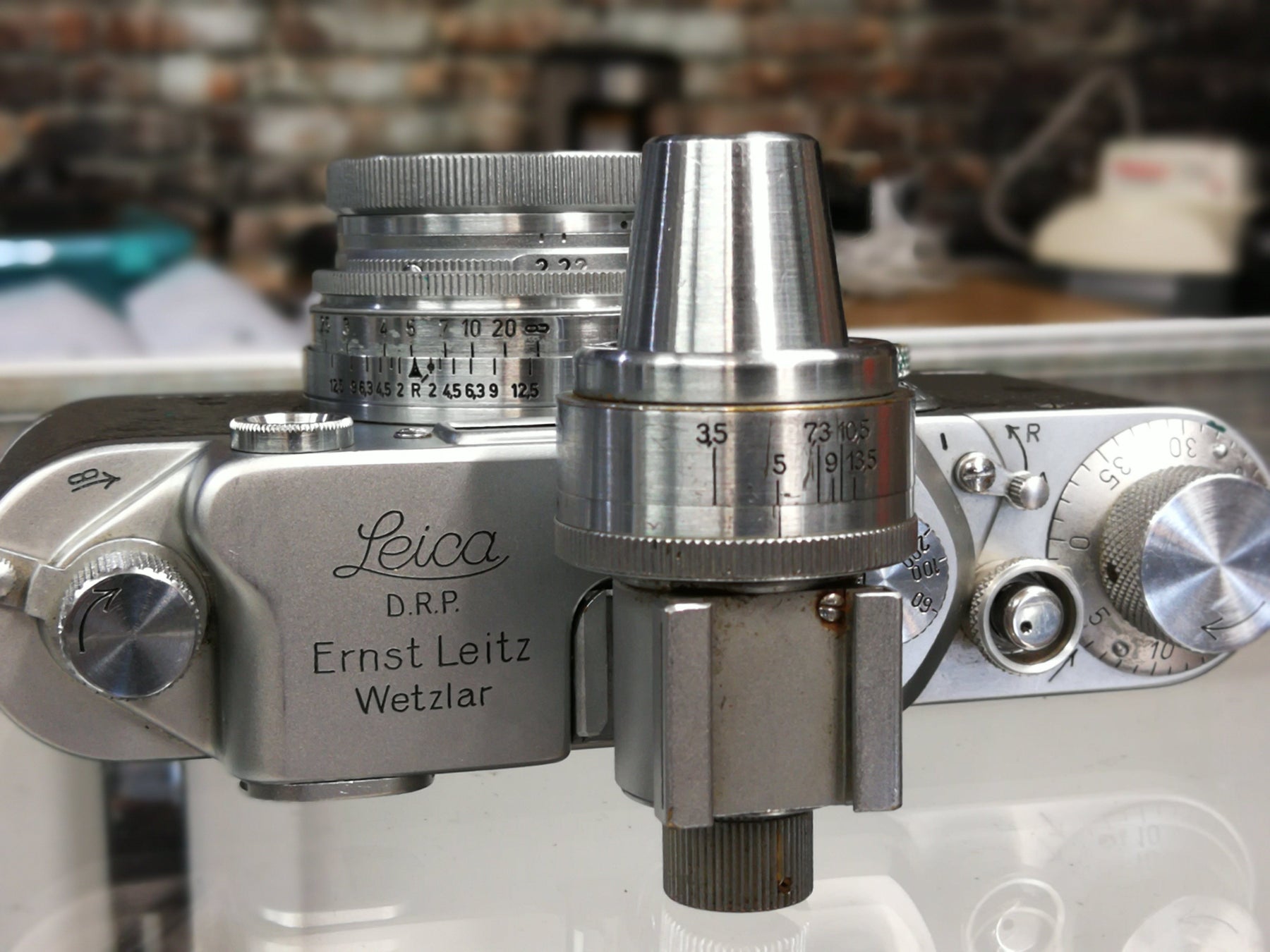
Lot 161 was history waiting to be found

We love cameras with great stories. Some come to us with no clue as to the history that they've witnessed, while others seem to have a rich connection to it. Leicas are cameras that tend to intersect time at it's most important, and come away with the photographs to tell those stories.
This week we acquired an old Leica rangefinder from the family of a WWII veteran. It was said to have been taken directly from a German war prisoner. Opinions of several contributors online have noted that it's far more likely that the camera and lenses were purchased just at the end of the war and photos were more of the period just after the great conflict. Further inquiry led us to the original owners name, Donald Brocker, a silver star recipient of Minneapolis, MN.
Seeing the camera in pictures displayed next to rolls of film, we were very anxious to discover if any of the included rolls might contain photographs of a time long forgotten. After a bit of darkroom chemistry, we found that they indeed had a lot to share.

The rolls were mostly Agfa ISOpan F dated with an expiration of 1946. According to our research these images were taken near Homburg sometime around 1945. According to Wikipedia, Homburg is situated in north of the district of Saarpfalz, close to the borders of Saarland with Rhineland-Palatinate and not too far from France. (please feel free to send us any corrections that you think may apply) This explains some of the French names and markings on signs in the photos of the city center.
We carefully developed and scanned the rolls that were included in the camera lot. Realizing that some of the photos have never been seen before, we thought it would be good to publish them to the site for the world to enjoy.

City pics like this one show areas of vitality and people going about their lives. Online historians have suggested that this photo was taken sometime shortly after the war.


Other photos show great destruction.



Many of the pictures show a snapshot of allied life on the forward base at Homburg. Hastily built wooden shacks, shared latrines off to the left, and Joe Palooka's fine establishment - likely the enlisted men's social hub.

GI Joe's 2

Captured German Artillery mark way points at the base

All throughout the rolls, there are photos of captured German artillery pieces. They are prominently on display and proudly photographed.

It's a little surprising how sharp the images are after all this time. Not all on the roll were good, but a large number of them were.
Later in the rolls, there were even attempts at some avant-garde silhouette photography during perhaps some more restful times.
A game of chess.

A glass of wine between lovers or friends?

Out in the field, the photographer behind this camera photographed the world around him. Many bleak and blustery landscapes were captured. Images of buildings bearing the scars of war, marked with bullet holes and craters.

A German plane engine lies where it came to rest

Being surrounded by so much loss must have taken an incredible toll on the men and women of that time. There were many pictures of grave sites remembering the fallen.

There were so many incredible photos, and perhaps in a future blog I'll post the rest, but one of the real joys of the vintage camera business for me is uncovering the history that has lay hidden in closets for years. Bringing these images to light after all that time makes my job one of the most interesting things I could choose to do.
Ken
